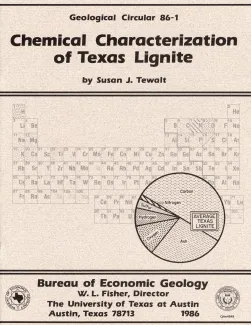
Publication Details
Geolocation:
Get the Publication
$11.00
Abstract/Description:
Statistical analysis of chemical data on Texas Eocene coals revealed startigraphic and geographic trends in lignite quality. Chemical data on near-surface coals wre obtained from various private and public sources. Seams from deep-basin coals were compared. Wilcox coals are the best for combustion processes, Yeagua coals are intermediate, and Jackson coals are the poorest. Wilcox Group coals, in the Sabine Uplift particularly, are borderline lignite A to subbituminous C in rank in both the near surface and the deep basin. Jackson Group coals are lignite A in the near surface. Examination of ash-oxide data revealed high variability witin Wilcox and Jackson Group coals in East Texas. The Jackson Group in South Texas, however, has a distinctive ask chemistry, sugguesting possible volcanogenic sources for some of the ask. Ash chemistry should pose no serious contraints on utilization of the Jackson lignite, although some ashes are high in Na2O. In the deep-basin cores, Na2O content increases with seam depth, coincident with increases of Na+ in groundwater. Average trace element concentrations in TExas coals are similar to those in other U.S. lignites on a whole-coal basisi. Most trace elements exhibit highly skewed frequency distributions with few large values. Locally high selenium or arsenic contents may cause deleterious environmental effects;uranium contents are low in seams likely to be utilized. Trace elements data on deep-basin coals sugguests inorganic associations for fluorine, chromium, copper, vanadium, and uranium. Near-surface and deep-basin seams in Texas are similar in quality, although deep-basin searms are represented by few data. Quality disparity is greatest between deep-basin and near-surface seams in the Sabine Uplift area, mainly because of lower ash contents in the deep seams.